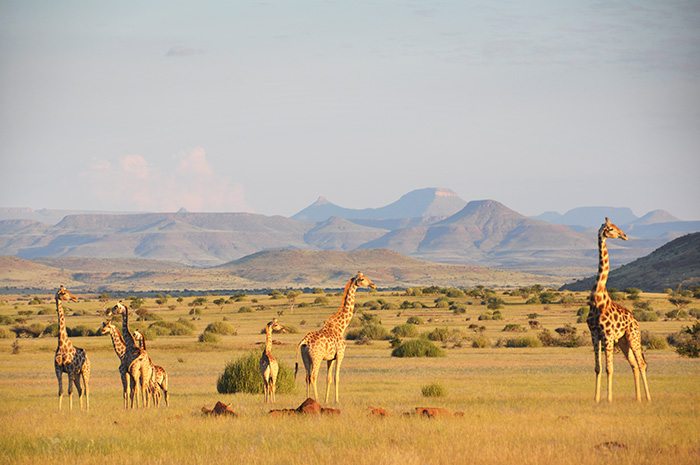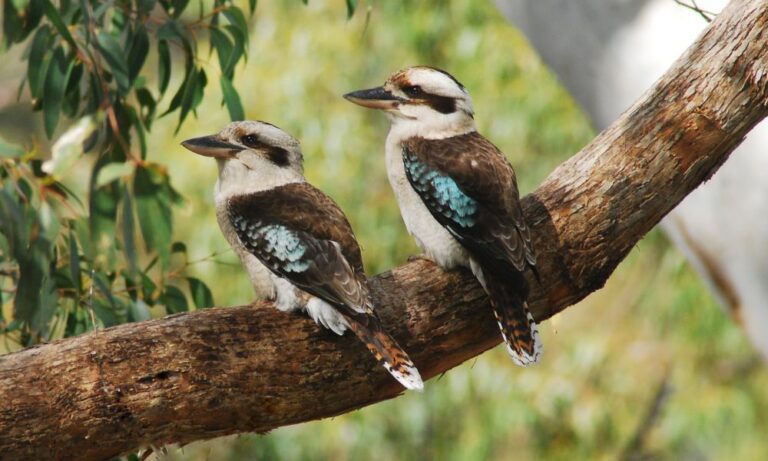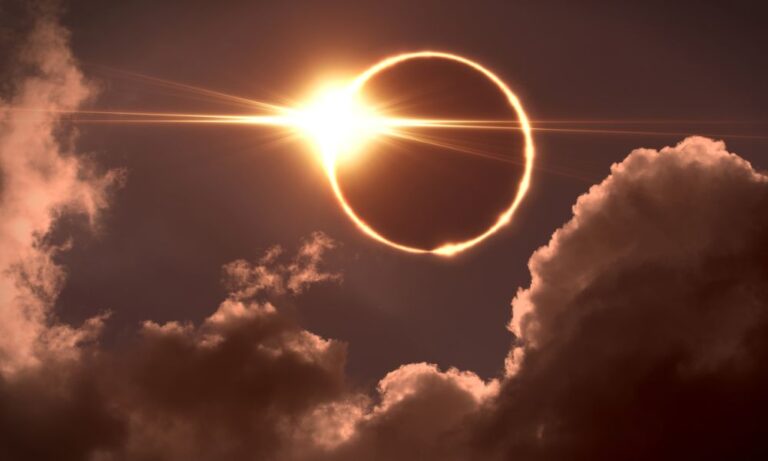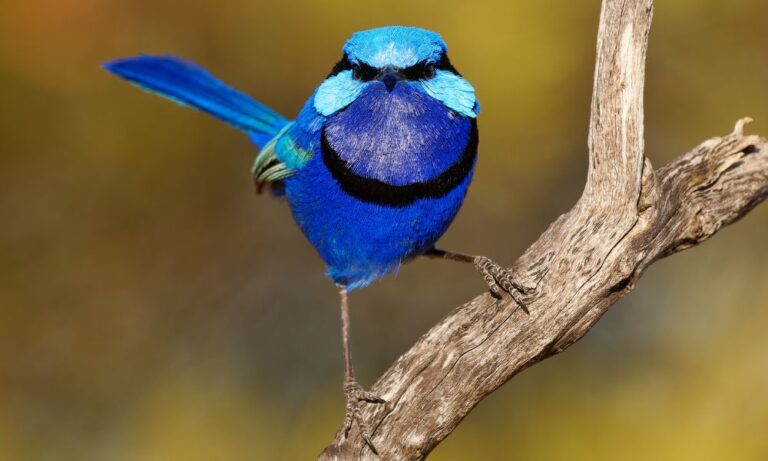We need to talk about giraffe. The world has talked a lot about the perilous predicaments of elephants, rhinoceros and our native birds over the past few decades – and for good reason. But somehow we managed to overlook a devastating decline in the number of giraffe. That should have been hard to do, given that they stand nearly four metres high and are the world’s tallest animals.
From her home in Namibia, where the Giraffe Conservation Foundation is based, co-director Stephanie Fennessy says that 30 years ago there were about 155,000 giraffe in Africa; that figure is now 97,500 and falling. Plummeting, in fact. In December, the International Union for the Conservation of Nature (IUCN), releasing its annual “red list” of species in danger, changed the giraffe status to “vulnerable”.
Stephanie outlines the all-too familiar reasons: rising human population, habitats lost to farming and deforestation, illegal killing (let’s not call it “poaching” or “big-game hunting”) and the continent’s ongoing civil wars and skirmishes.
Her husband, Dr Julian Fennessy, an Australian who is the world’s leading researcher on giraffe, has been blunt about the animal’s plight: “Whilst giraffe are commonly seen on safari, in the media and in zoos, people – including conservationists – are unaware that these majestic animals are undergoing a silent extinction. It is timely that we stick our neck out for the giraffe before it is too late.”
Sir David Attenborough echoes him. “These gentle giants have been overlooked. It’s well known that African elephants are in trouble and there are perhaps just under half a million left. But what no-one realises is there are far fewer giraffe, which have already become extinct in seven countries,” he warned in a BBC documentary a year ago.

NEW INTEREST
No-one realised until Julian, with Stephanie’s assistance, began his research almost two decades ago. For 200 years, scientists had pretty much dismissed the gentle giants as nice, pretty and unthreatening, but not all that interesting.
Julian had been to South Africa as an exchange student and loved the continent, its people and wildlife. He returned to Australia for his university studies, became interested in conservation, and married Stephanie, whose heritage is German.
They moved to Africa where he worked on conservation projects in Kenya and other nations. Stephanie is an experienced environmental consultant. With a small international team beside them, the couple created the Giraffe Conservation Foundation in 2009. Now based in Namibia, the non-governmental organisation works across the continent, and has the resources to enable them, and a team of five, to work full-time on research and raising awareness in Africa and worldwide. One of its major discoveries is that there is not just one species of the animal, once known as “camelopard” for its camel shape and leopard colouring, but four, and each one is from a different part of Africa. This might sound like something that’s only of interest to a giraffe or its date, but it is proving crucial in the campaign to save the creatures.
Stephanie explains: “First and foremost, it is important in preserving biodiversity. But previously, the conservation authorities and government bodies would lump all giraffe together as one species and say, ‘Well, there are 100,000 of them so they are not doing too badly.’ But if there are four species, they have to treat them individually. I believe three of those species would be considered as more seriously threatened and there would be greater efforts to protect them.”
The most seriously threatened is the northern giraffe, whose home ground is in Egypt and neighbouring north African countries, she says. There may be as few as 5000 left. In addition, eastern and central African species are not thriving. Julian has estimated they are extinct in at least seven countries where they previously roamed. Southern giraffe are increasing markedly in numbers, backing up his earlier point: that’s where most safaris are; and that’s where many tourists see them.

HOME GROUND
It may seem a world away, but Auckland Zoo and Australian zoos are deeply involved in helping the giraffe in its plight. Auckland Zoo’s Conservation Fund has been a prime partner of the foundation for almost five years, mainly as part of an Australasian breeding programme with institutions such as Werribee Open Range Zoo near Melbourne and Taronga Western Plains Zoo in Dubbo, New South Wales. The zoos breed young giraffe and move them around to keep a balance between old and young males (when giraffe get jealous, their neck-fighting bouts are groundbreaking) and to maintain the strength of the gene pool by reducing inter-breeding.
Last year, Auckland Zoo’s Pridelands team leader Nat Sullivan flew to Africa to work alongside Julian and his team (see Wild Time, right). For Nat, managing Pridelands is her dream job. “They’re lovely animals but can be annoying to work with. They do things on their own terms and in their own time. You just have to go along with them.” About five years ago, Auckland Zoo decided to support a conservation project in Africa. Nat saw her chance: “I jumped in and found the Giraffe Conservation Foundation. It’s the only organisation solely dedicated to giraffe in Africa. What’s really surprising is that there’s very little known about giraffe. They call them ‘the forgotten megafauna [large animals]’. They don’t get as much attention as lions and elephants.” Unless it’s from Julian, Steph and their team, that is.
HOW TO HELP
We’re half a world away from Africa. Some may be lucky enough to travel there and see giraffe in the wild; others will only ever see them on wildlife TV programmes. Knowing their plight, what can we do to help these otherworldly creatures?
For Nat, the opportunity starts at the zoo. “One of the biggest things we can do at the zoo is to create awareness. We’ve got a large audience we’re talking to every day. To be able to share some of these stories about what’s going on in the wild right now with some of these species is pretty powerful.
“Generally, people who are coming here want to help. We realise it’s hard to know what to do from New Zealand. How do you help giraffe in Africa?
“Just to bring that awareness to the forefront is important. If people don’t know about the problem, then they can’t help.”
From Africa, Stephanie agrees that Auckland and other zoos are helping focus attention on the status of giraffe in the wild. She applauds the efforts that many governments have gone to, supporting the foundation in practical, legal and financial ways. However, she cautions, Africa is a complex continent and solutions are, to poach from Oscar Wilde, “rarely pure and never simple.”
“From New Zealand, it might sound nice to say, ‘People should learn to live alongside wildlife and treat them just as part of the landscape’,” Nat says, “but what about when you live in the bush and your child has to go outside to the toilet in the middle of the night? Or you are walking along the path and there are lions about? We need to find a way for the animals to have their place and their safety and their future, and the people too.”







